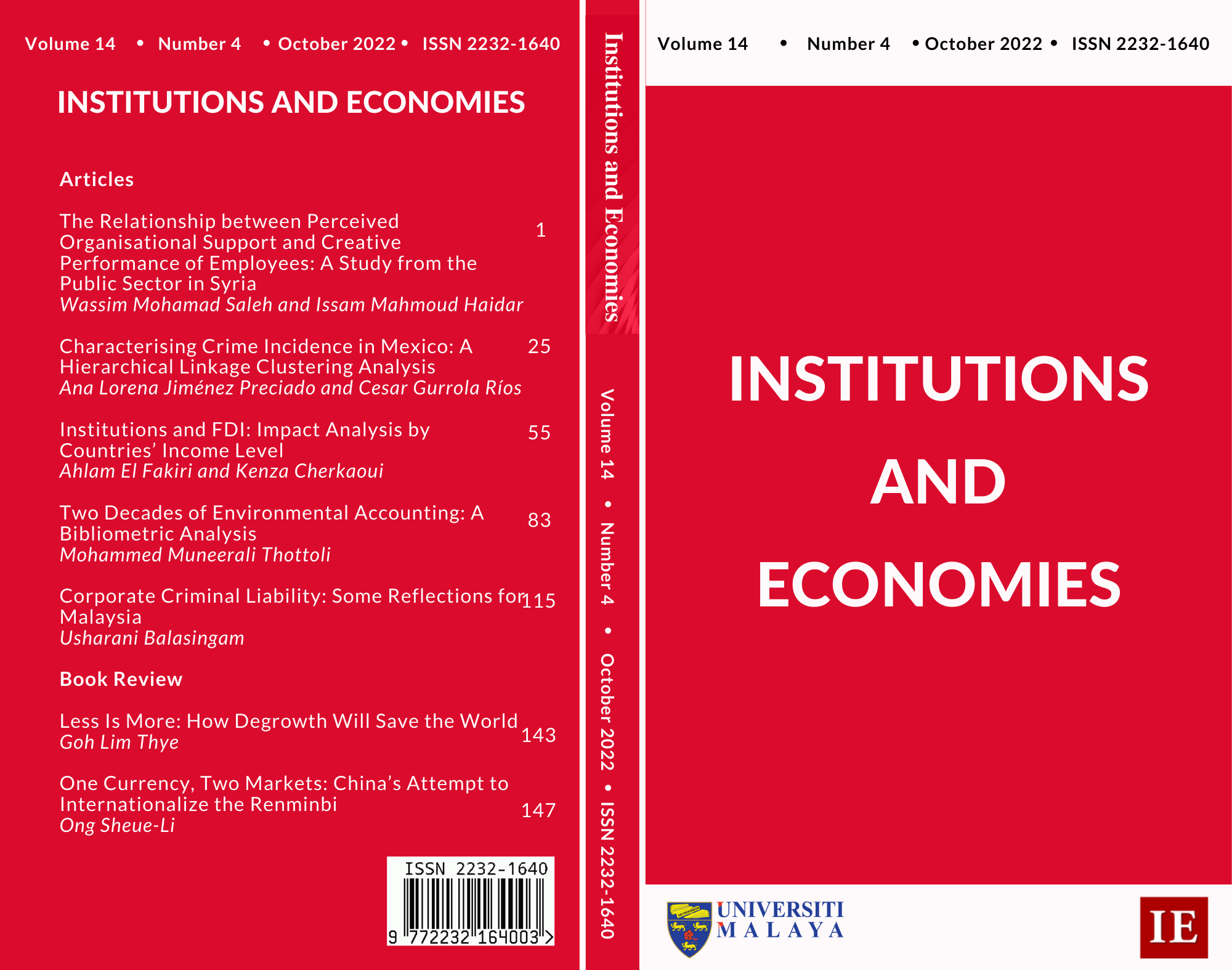The Relationship between Perceived Organisational Support and Creative Performance of Employees: A Study from the Public Sector in Syria
Main Article Content
Abstract
The aim of this study is to determine the relationship between perceived organisational support (POS) represented by the following dimensions: behaviour of leaders towards subordinates, contribution to decision-making, support and self-assurance among employees, and the creative performance of employees, as well as whether there is a difference in level of perception of organisational support according to demographic variables (sex, functional age, scientific qualification). The research sample consisted of all 138 employees of the Syrian Telecommunications and Post Regulatory Authority (SY-TPRA). Using the analytical descriptive method, a questionnaire was designed and distributed throughout the sample. The findings indicate that POS has a strong positive correlation with the creative performance of employees, and that there is no difference in employees’ level of perception of the organisational support depending on the considered demographic variables. As far as the researchers are aware, this research is the first of its kind to be carried out in the telecommunications sector in Syria. Practically, this research will help decision makers improve the creative performance of staff on the one hand, and to develop management practices that are properly perceived by employees on the other.
Downloads
Article Details
Submission of a manuscript implies: that the work described is original, has not been published before (except in the form of an abstract or as part of a published lecture, review, or thesis); that is not under consideration for publication elsewhere; that its publication has been approved by all co-authors, if any, as well as tacitly or explicitly by the responsible authorities at the institution where the work was carried out. Transfer of copyright to the University of Malaya becomes effective if and when the article is accepted for publication. The copyright covers the exclusive right to reproduce and distribute the article, including reprints, translations, photographic reproductions, microform, electronic form (offline and online) or other reproductions of similar nature.
An author may self-archive the English language version of his/her article on his/her own website and his/her institutions repository; however he/she may not use the publishers PDF version which is posted on www.ijie.um.edu.my. Furthermore, the author may only post his/her version, provided acknowledgement is given to the original source of publication and a link must be accompanied by the following text: The original publication is available at www.ijie.um.edu.my.
All articles published in this journal are protected by copyright, which covers the exclusive rights to reproduce and redistribute the article (e.g. as offprint), as well as all translation rights. No material published in this journal may be reproduced photographically or stored on microfilm, in electronic database, video disks, etc., without first obtaining written permission from the publishers. The use of general descriptive names, trade names, trademarks, etc., in this publication, even if not specifically identified, does not imply that these names are not protected by the relevant laws and regulations.
The copyright owners consent does not include copying for general distribution, promotion, new works, or resale. In these cases, specific written permission must first be obtained from the publishers.

